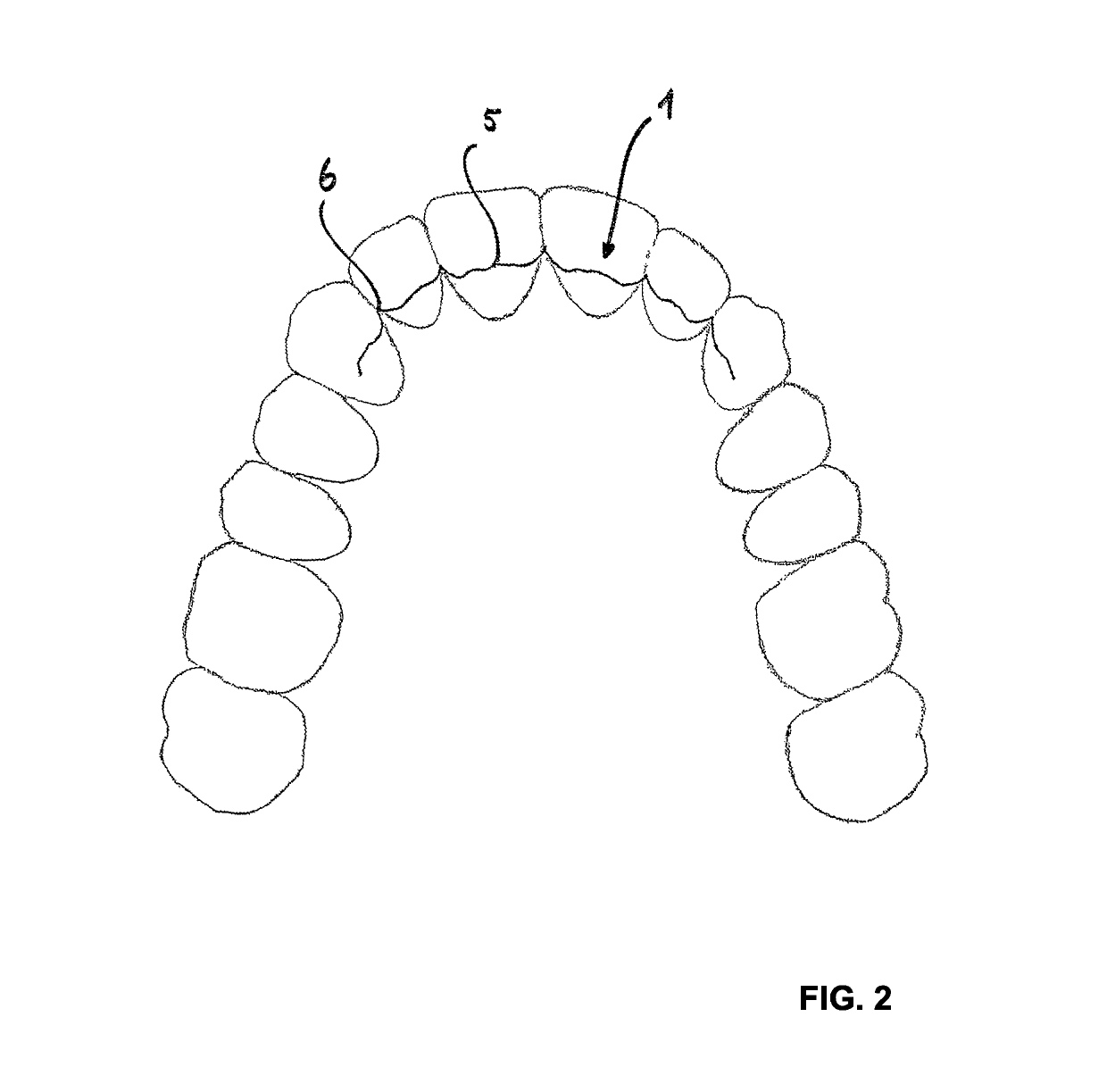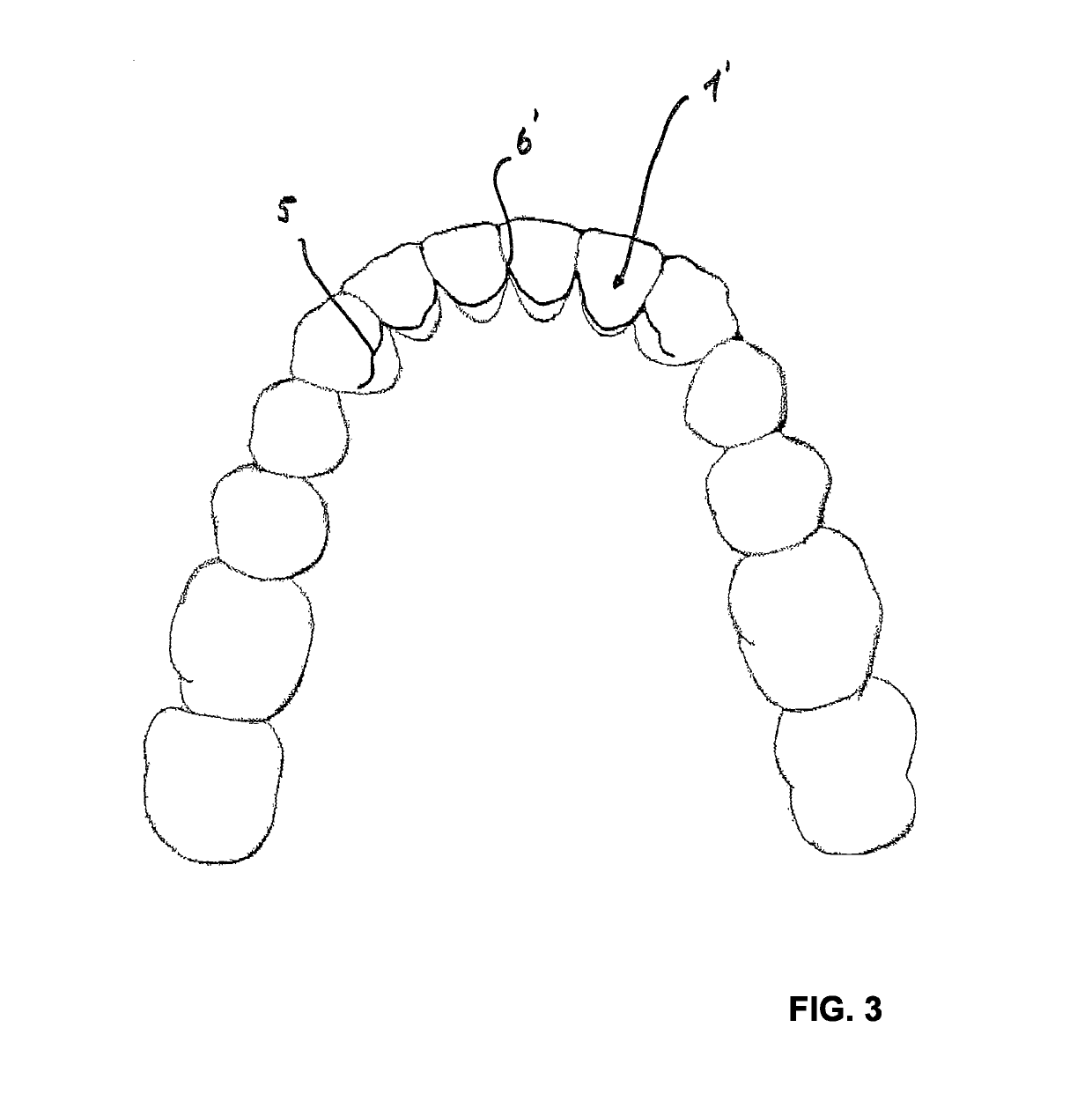Retainer and method for production thereof
a technology of retainers and trays, applied in the field of retainers, can solve the problems of affecting the effect of treatment effect, so as to reduce the micro-roughness and nano-roughness of the surface of the retainer, impede the sticking of potentially harmful germs, and increase the corrosion resistance of the retainer
- Summary
- Abstract
- Description
- Claims
- Application Information
AI Technical Summary
Benefits of technology
Problems solved by technology
Method used
Image
Examples
Embodiment Construction
[0068]A first exemplary embodiment, shown in FIG. 1, includes a retainer 1, which is adapted for use in a upper jaw. The retainer 1 is configured as a 6-point retainer and is connected to six teeth in a force-transmitting manner after it has been inserted into the respective patient. The retainer 1 is shown in FIG. 1 in a plan view, so that an upper surface 2 of the retainer 1 is visible.
[0069]The retainer 1 includes an arc 3, the global shape of which is parabolic. This global shape of the arc 3 is determined by the shape of the respective upper jaw, into which the retainer 1 is to be inserted. The arc 3 includes locally individual formations 4, which can be divided into two categories. The first category refers to formations 4 in the form of “shallow waves”5 which are configured to adapt the retainer 1 to an individual topography of the adjacent teeth. These shallow waves 5 are therefore correspondingly adapted to an individual tooth shape of a patient. The second category describ...
PUM
 Login to View More
Login to View More Abstract
Description
Claims
Application Information
 Login to View More
Login to View More - R&D
- Intellectual Property
- Life Sciences
- Materials
- Tech Scout
- Unparalleled Data Quality
- Higher Quality Content
- 60% Fewer Hallucinations
Browse by: Latest US Patents, China's latest patents, Technical Efficacy Thesaurus, Application Domain, Technology Topic, Popular Technical Reports.
© 2025 PatSnap. All rights reserved.Legal|Privacy policy|Modern Slavery Act Transparency Statement|Sitemap|About US| Contact US: help@patsnap.com



